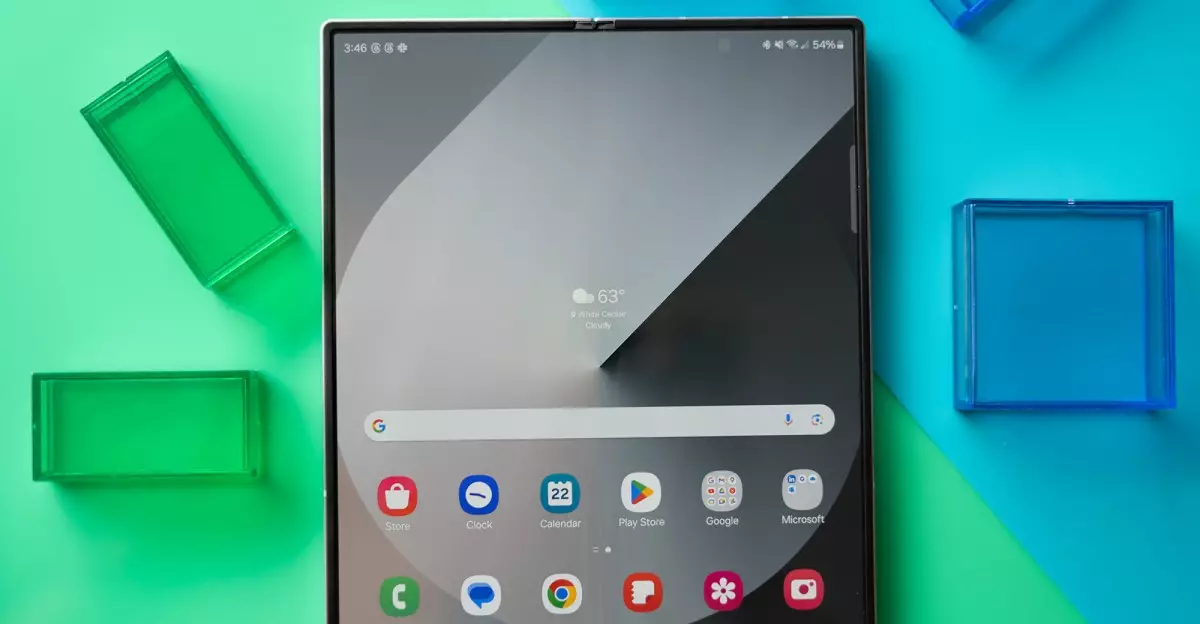For years, the concept of foldable smartphones has lingered on the peripheral edges of mainstream adoption. Despite the buzz and technological showcase, consumer enthusiasm has yet to translate into widespread sales. Samsung, the undisputed leader in this niche, faces a stark reality: foldable phones constitute a meager slice—just 1.5%—of the global smartphone market in 2024. While it might seem like a niche concern, for Samsung, these figures represent both a challenge and an opportunity. The company’s latest strategies mirror an ambitious desire to shift perceptions, elevate usability, and finally propel foldables into the mainstream. By introducing aggressive new models, including the highly anticipated Ultra series, Samsung aims to rekindle consumer interest and redefine what a foldable device can be.
What’s truly striking about Samsung’s approach is its recognition of past shortcomings. The iteration cycle—the Z Fold 6 and Z Flip 6—offered incremental upgrades rather than groundbreaking innovations. They were characterized by minor design tweaks, modest hardware bumps, and software enhancements that failed to capture imagination. It’s a strategic misstep that has stagnated enthusiasm. To truly compete, Samsung is now positioning itself as a pioneer dedicated to unlocking the foldable’s true potential. This means bold design changes, competitive pricing, and addressing the very hurdles—durability, durability, and costs—that have held foldables back. The emphasis on a purported ultra-slim foldable and larger front screens hints at a conscious effort to boost practicality and aesthetic appeal, making these devices more approachable and less cumbersome.
The introduction of the Ultra model signifies more than just a marketing tactic—it reveals Samsung’s sincere intent to dominate the foldable market. By aligning the Ultra branding with high-end specifications, the company is signaling a shift in strategy: foldables are no longer niche gadgets but premium, desirable tools suited for a broader audience. The move toward thinner profiles and redesigned covers is not only about aesthetics but also about alleviating genuine consumer concerns such as bulkiness and fragility. These refinements could serve as the catalyst needed to overcome the barrier of perceived fragility, a common reason for consumer hesitation. But even with these improvements, Samsung remains aware of the bigger challenge: durability and repair costs are still significant factors in the foldable’s value proposition.
Are Innovations Enough to Shift Consumer Perception?
While Samsung’s commitment to innovation is evident, it’s fair to question whether these hardware revisions alone can turn the tide of consumer skepticism. The core issue revolves not merely around form but also around durability and cost. Foldable screens are more prone to dust ingress, susceptibility to damage, and complex repairs—barriers that remain unresolved despite Samsung’s claims of pursuing full dustproofing. These issues hamper the device’s trustworthiness, especially among users who demand durability and peace of mind for daily use. The prospect of shelling out a premium price for a device that isn’t fully rugged enough for everyday life remains a significant psychological hurdle.
Price is another critical factor. Even the most innovative foldables risk falling short if consumers perceive them as overpriced luxury items rather than functional everyday devices. This is where Samsung’s strategy of offering a range of models—potentially including a cheaper Fan Edition—could broaden accessibility. Yet, whether a less expensive model with dated designs will truly sway buyers remains uncertain. The core experience of a foldable needs to match or surpass that of traditional flagship phones—without compromises that make it seem obsolete or fragile.
Adding fuel to the conversation is the anticipated entry of Apple into the foldable market, perhaps as soon as 2026. Apple’s entrance has the potential to shift the entire landscape by providing a robust, fully integrated alternative that could legitimize foldables in the eyes of skeptical consumers. If Apple delivers a compelling foldable experience, it could catalyze a surge in adoption, dragging Samsung along in its wake. Samsung’s current strategy, focused on fleshing out different form factors, is likely driven by this anticipation—the hope that offering diverse options across price ranges can finally crack open the market.
The Future of Foldables: Beyond Hardware, Toward Cultural Relevance
In essence, the future of foldables hinges on more than just technological innovation. It demands a cultural shift—an acceptance of hybrid form factors as viable, durable, and desirable. Samsung’s latest offerings indicate an understanding that mere hardware upgrades aren’t enough; the device must also fit into consumer lifestyles seamlessly. This involves reducing costs, enhancing durability, and creating compelling experiences that justify the premium price tags.
What remains to be seen is whether Samsung’s renewed enthusiasm and strategic model expansion will be enough to inspire real change. A foldable’s success will depend on whether it can become as reliable and user-friendly as traditional slabs while offering flexible advantages that no other form factor can match. His willingness to push boundaries and introduce innovative designs showcases a genuine commitment, but the industry’s core hurdle remains: convincing consumers that foldables are not just a fancy novelty but an essential evolution of smartphone technology.
As the market awaits Samsung’s upcoming announcements, there’s an underlying sense of optimism intertwined with realistic skepticism. Will these new models be enough to ignite a foldable revolution? Or will they merely serve as incremental steps toward the eventual mainstream adoption that has so far eluded the segment? Only time, and consumer choice, will tell.

